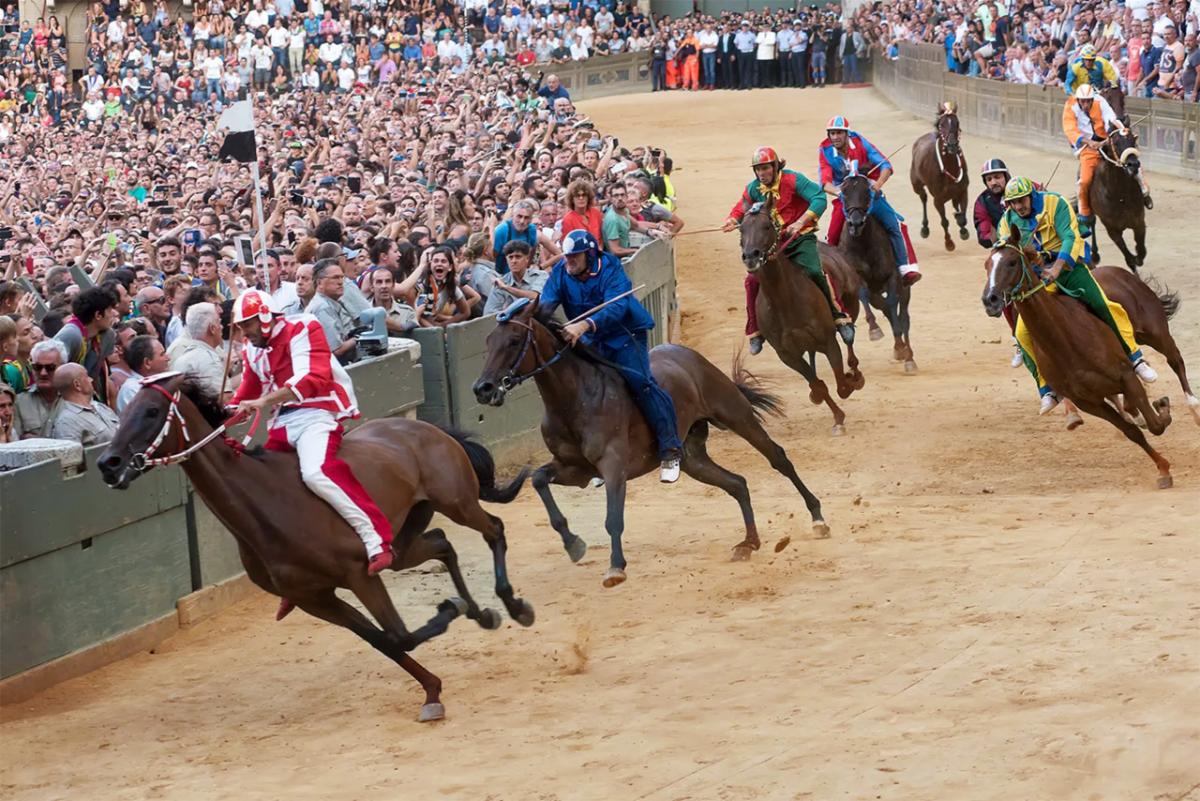
A medieval minute-and-a-half you’ll never forget! July 2 and August 16, annually.
Every year since 1652, a wildly dramatic, vividly costumed and dazzlingly brief horse race takes place around Siena’s bowl-shaped Piazza del Campo, or town square. Though the race itself lasts only a heart-stopping 90 seconds—three flat-out laps around the Campo— it’s the centerpiece of a several-day citywide festival dear to the hearts and souls of all 17 of Siena’s contrade, of neighborhoods.
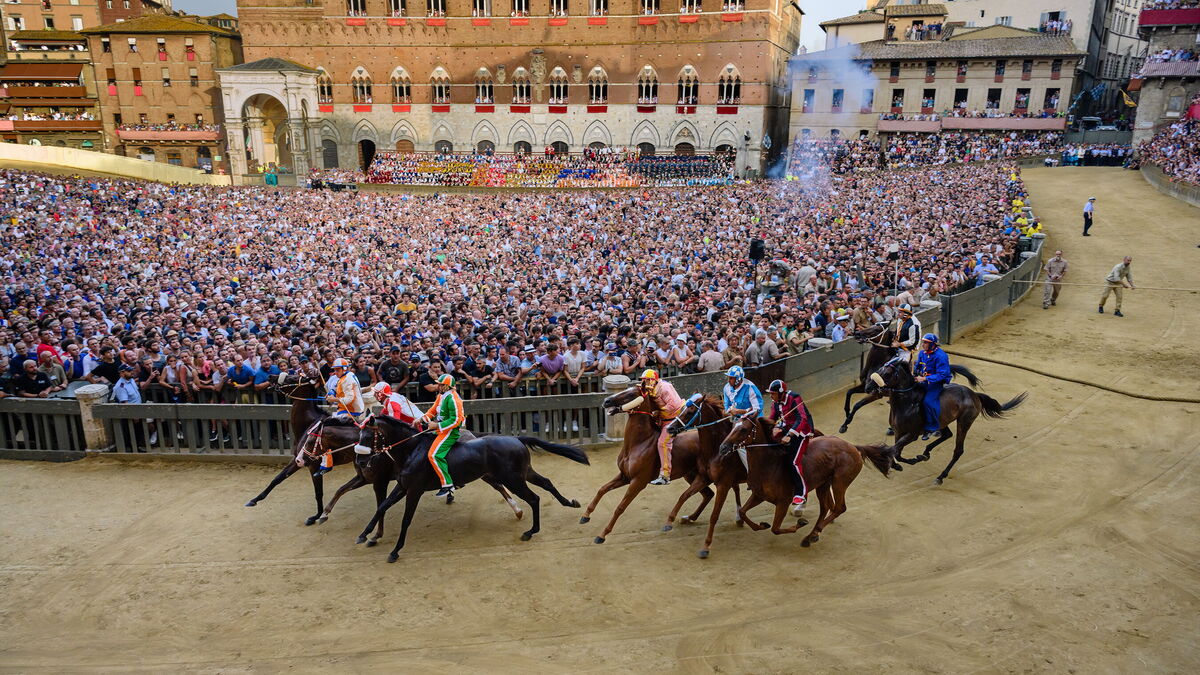
The contrade function much like tribes in many indigenous cultures, wards in New Orleans, or even Philadelphia’s Mummer’s clubs, as a lifelong badge of cultural identity and pride. Today, Siena’s Palio draws hundreds of spectators to this pristinely preserved medieval Tuscan city, but for residents, participants and their families, it’s an authentic and deeply meaningful local tradition with roots reaching back to the 13th century. For generations, its festive dinners, religious rituals and ornate costumes and protocols have encouraged a sense of civic pride, feisty neighborhood rivalries, daredevil athleticism — and plenty of race-day betting.
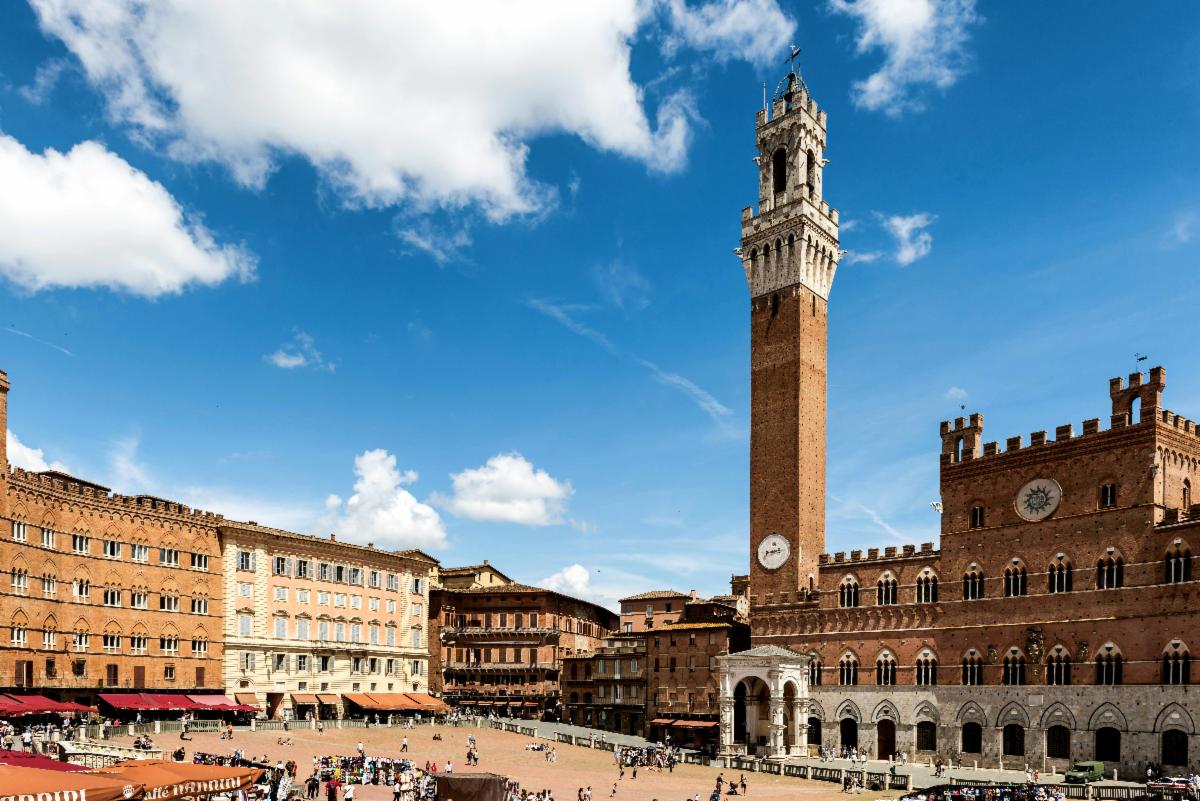
That’s what makes horse races… especially this one.
A few facts about what makes this horse race unique: first; it’s ridden bareback, second; the jockeys hired by the contrade only learn which horse they’ll be riding via a lottery the night before the race, and third; only ten of the city’s seventeen contrade will get to participate in each Palio (the seven who did not participate in the last race and three chosen at random).
But most memorably, in the Palio, the horse who crosses the finish line first wins the race – with or without its rider. In other words, it’s intense — the purpose-built racetrack of sand, volcanic tuff and dirt packed over the ancient cobblestone road and the mattresses piled against the piazza walls are not here for decoration. There are yet more fascinating specifics, but in the all or nothing true spirit of the Palio, the contrade whose horse comes in second is, quite simply, the loser.
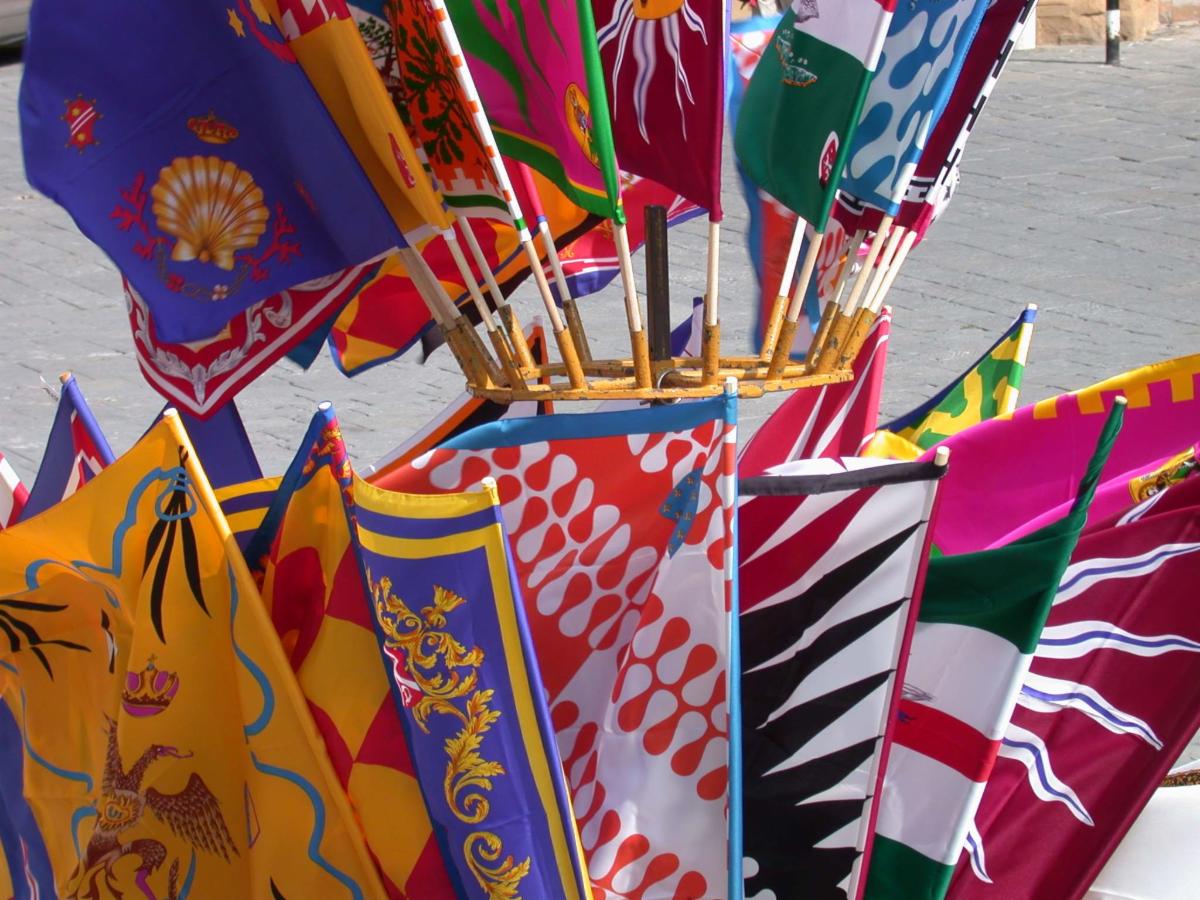
Keeping pace with history.
Initially (that is, back in the 13th century), the race was dedicated to Maria de Assunto. It was restricted to members of the nobility who charged at breakneck (sometimes literally) speed through the city’s tangle of narrow, hilly streets and alleyways. By the 16th century, the Palio had evolved to include the contrade and a growing roster of contests, processions and events. By 1652, it was relocated to the Campo. By 1656, the July race now honored the Madonna of Provenzano (a prized statue of the Virgin Mary), and an August Palio, following the Feast of the Assumption, was dedicated to the Virgin Mary. By 1774, both races were officially listed in the town archives.
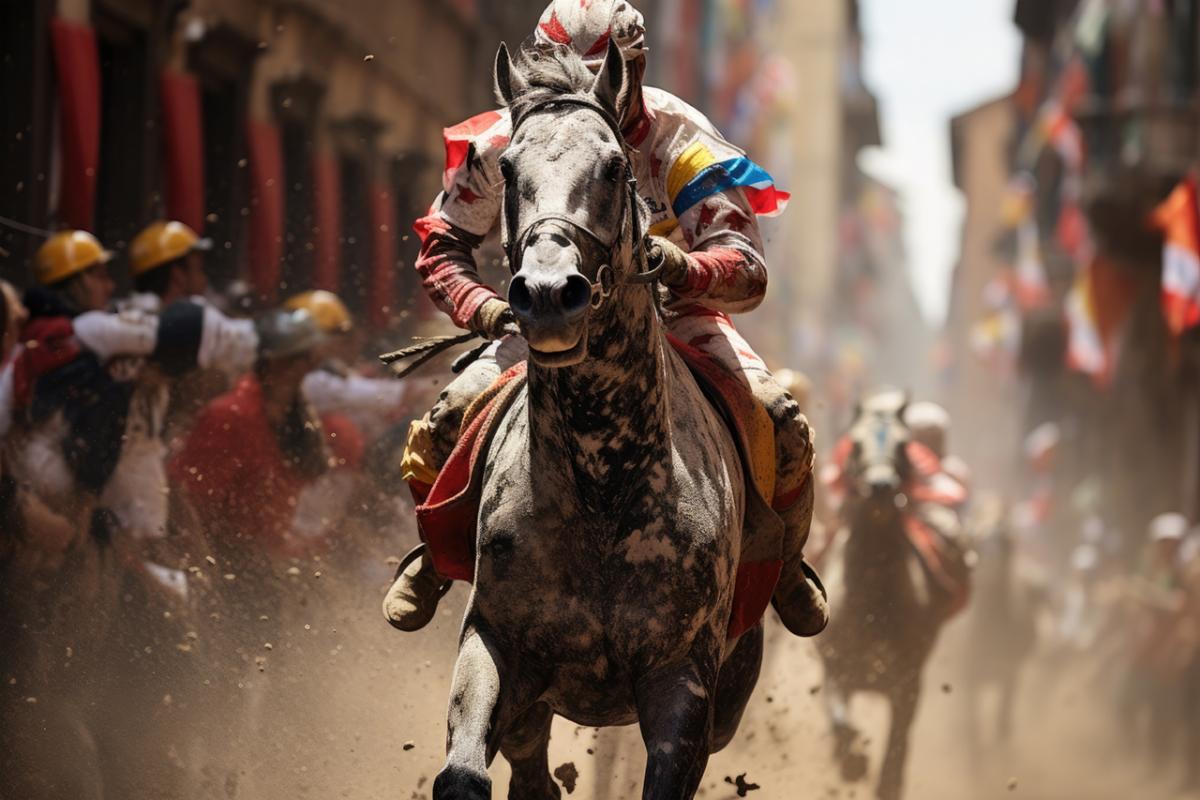
Pounding hoofbeats, beating hearts.
Standing within the Campo, which is free, you’ll get the full, unforgettable experience: rhythmic drums, vibrant costumes, brilliant banners. A wagon carrying the hand-painted banner (the actual Palio), to be awarded to the winning contrade. And of course, pounding hoofbeats. For communal safety, guards will lock spectators into the Campo as the processions begin, until the instant the race ends and the energy level* explodes. It’s a long, but remarkable day.
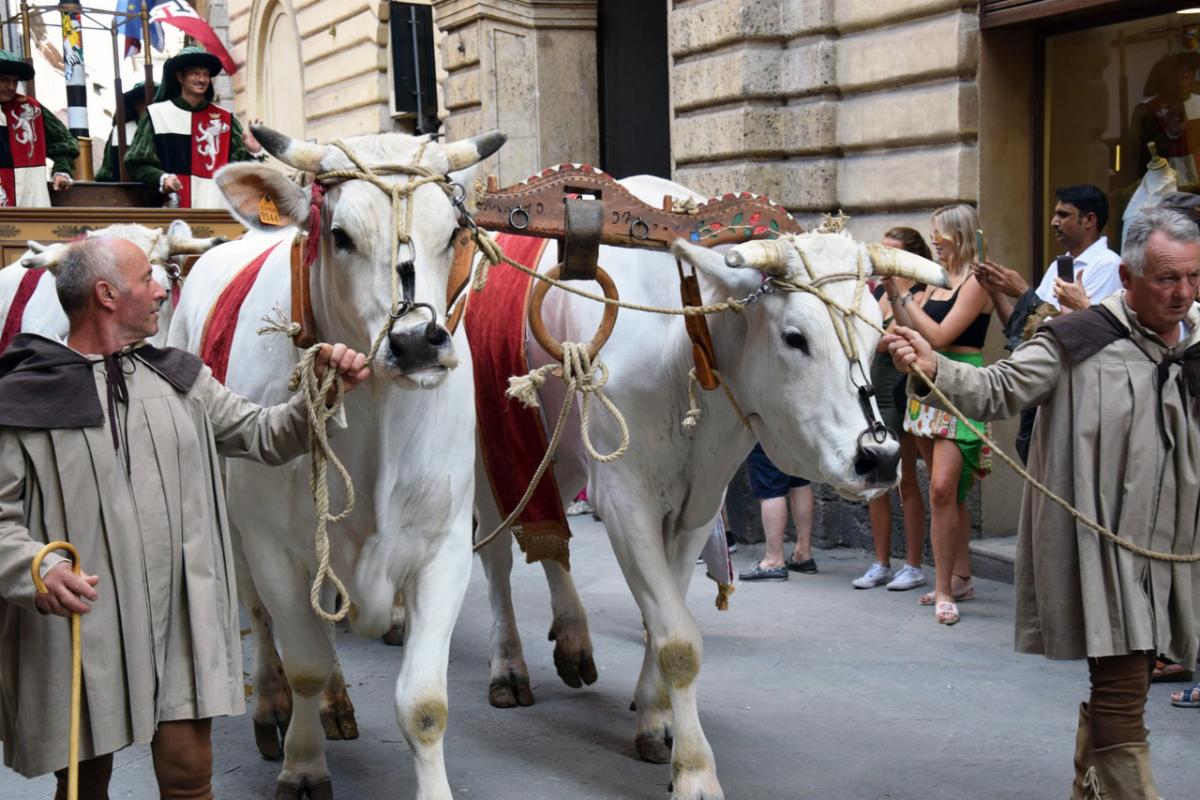
It’s also possible to reserve paid seats on the bleachers erected in the Campo, or to rent a space with a view of the action. Discover my Italy has helped many Custom Tour clients to attend while in Tuscany, but it does require ample advance planning
If you love horse racing, pageantry or the adventure of stepping back into another era, the Palio is indelible — there really is nothing else like it in this world.